Silk natural material is one of the thinnest products used as a canvas for hand painting, better known as batik. By applying this technology, excellent clarity of borders is achieved because there is no mixed color. For the most part, people of art use a wide variety of colors in their works, after which the question arises, what frame should be chosen for batik. We will try to understand this issue.
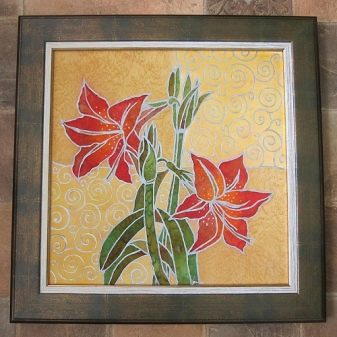
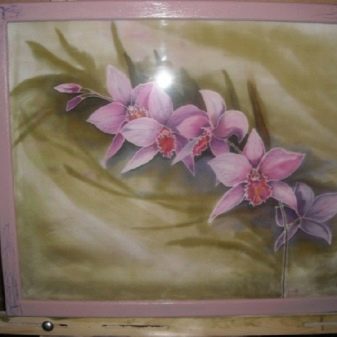
Selecting the appropriate subframe
One of the main and initial steps that should be performed immediately before the start of painting is to purchase a frame for batik. A subframe or frame is probably the main component of a future work of art: with its help, the canvas is tightly stretched, due to which the picture will not be deformed due to fidgeting in place. We suggest considering some of the most popular variations in web fixation.
- Sliding structure. The name speaks for itself. Such a frame is very convenient to use because of the possibility of making a drawing of different shapes, sizes, etc. Previously, it was rather difficult to find such a frame, but today there are no such problems. In any store for creativity you are sure to find a similar product. It is required to choose the size of the structure in advance. Then you have the opportunity to make pictures of different shapes: rectangular or square - it all depends on your imagination.
Such a frame is the most comfortable for work, it does not limit the artist in the form of a canvas, and is also relatively inexpensive.
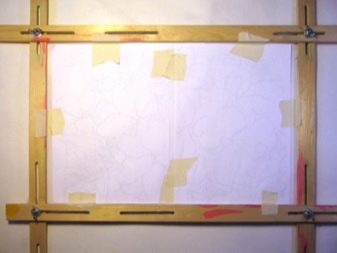
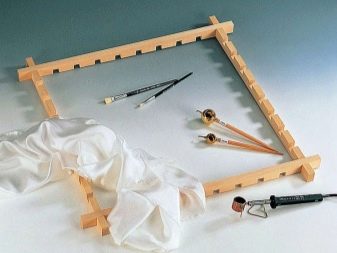
- Stretcher. In fact, it is a frame, but with only one difference - one side of the plane is beveled, which is done so that the canvas does not come into contact with the frame itself when tensioned, respectively, and the paint will not leak under it. This design has its positive aspects, namely stability during operation. Simply put, it will not be skewed. However, it is necessary to have several subframes, because there is no way to adjust the shape and size.
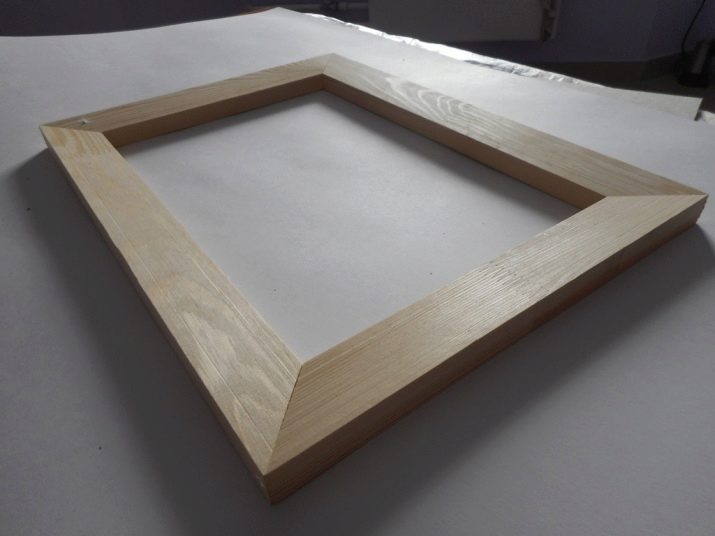
- Hoop. Not very convenient frames, some professionals use them, but the vast majority do not even consider such designs for their work. The hoop will not work when drawing on a hot batik. If you still buy, then only the largest size, namely 35/40.
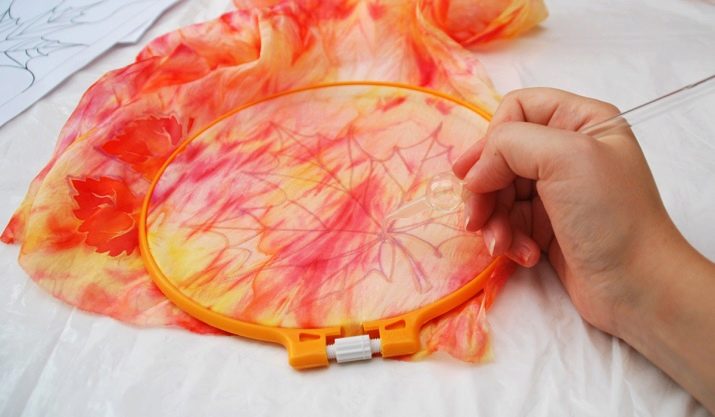
- Plastic frame. It is convenient at the completion of work, easy to wash, and most importantly - the likelihood of a burst of a click during operation is minimized. However, plastic frames have a rather high cost, while there are other, better variations at a lower price that are suitable for making batik.
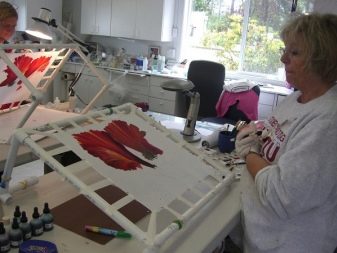
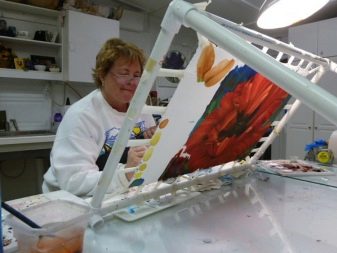
- Professional frame. It is considered to be the best of all possible variations. The design has a rigid mount, hooks that are located along the rails practically do not harm the silk fabric. However, the canvas needs to be pulled very carefully due to the high sharpness of the fastening, and with the same accuracy you will need to remove the fabric.
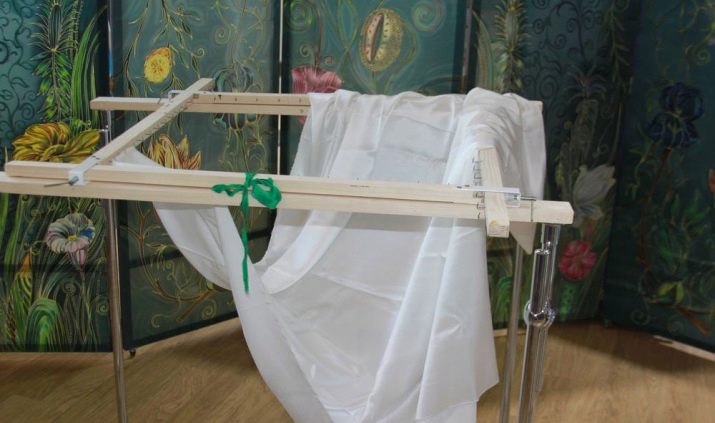
How to tension the fabric?
After acquiring the frame, tension the canvas correctly. This process is not fast, but if you follow the instructions, you will do the job efficiently.
All actions must be performed in turn:
- First of all, it is necessary to prepare a workplace;
- then proceed to the assembly of the frame;
- then you need to check the diagonal, as indicated in the picture: if the sides are skewed, align with a light tapping of the hammer.
The pulling process often varies, it all depends on the frame design. Separate products in the kit have studs for fastening, such as a professional frame - everything is simple here.
There are also products to which you have to fasten the canvas using buttons: in turn, each corner is fixed with a clerical button, it is important to ensure that the frame does not warp.
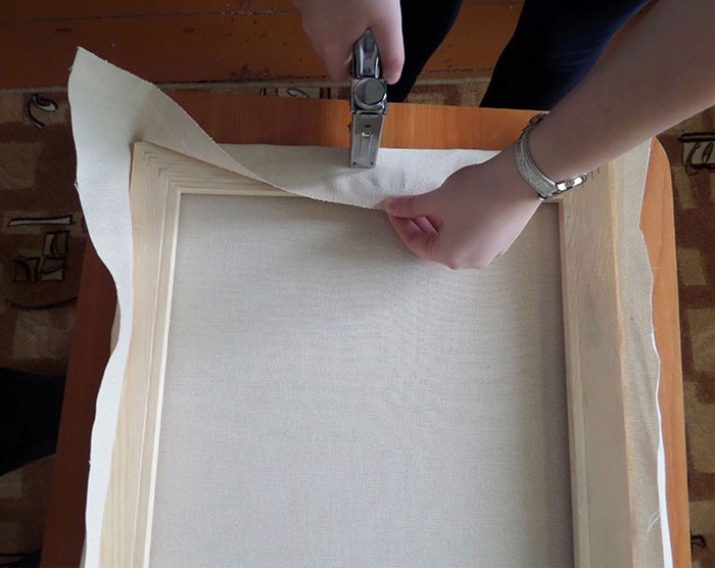
The choice of a subframe for a future masterpiece is an important step that should be taken with full responsibility. Any defect in the product usually means a damaged batik. But, choosing the most suitable method of fastening and properly pulling the fabric, you will save yourself from problems such as a fuzzy pattern or smudges.
See how to pull fabric onto a stretcher in the next video.










